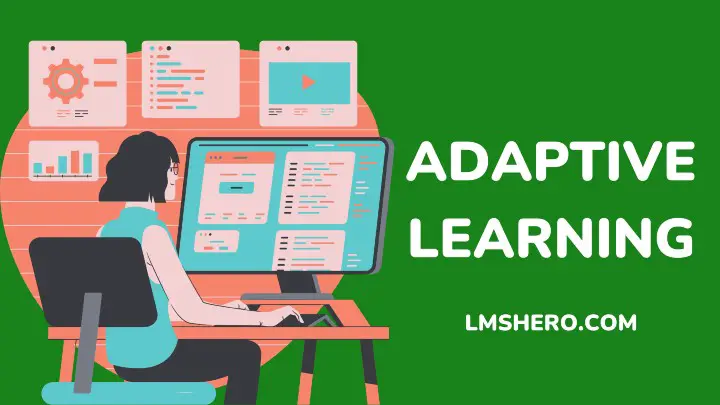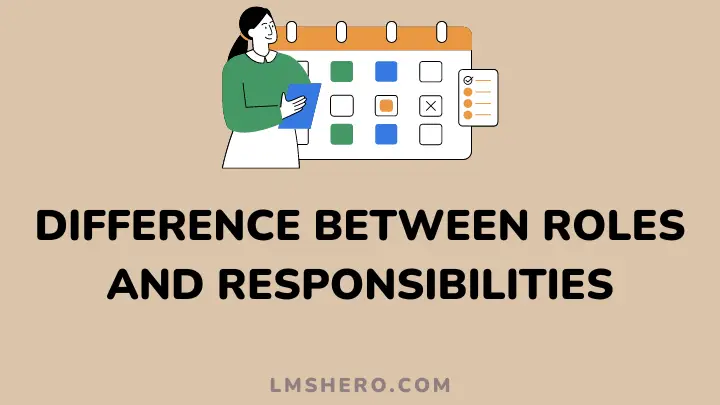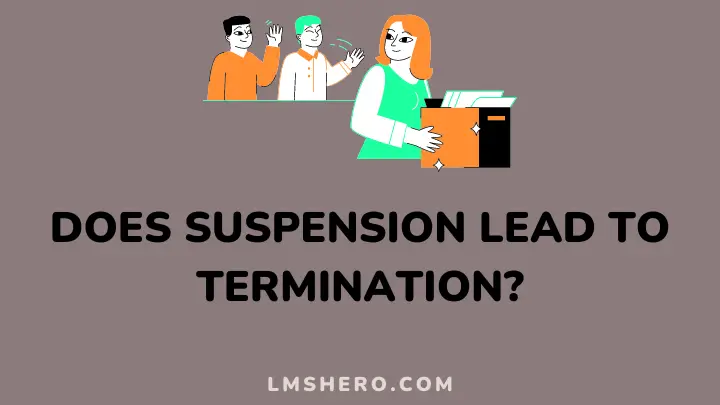Over the past few years, adaptive learning has become a major innovation in education. Through it, students can make incredible strides forward, and teachers can help their students address specific areas of difficulty.
Adaptive learning is an educational approach using technology that predicts a learner’s strengths and weaknesses and adapts to those needs. Individualized instruction, feedback, and assessment help to meet these needs.
This article examines the concept of adaptive learning, its importance, and its benefits to the educational system.
What Is Adaptive Learning?
Adaptive learning is a customized approach to teaching that uses artificial intelligence to deliver specific education content based on how the student learns best.
In addition, it is a method of teaching that takes individual student needs into account and provides customized materials accordingly. It delivers tailored resources and assessments to meet individual learning styles and preferences.
The adaptive learning method is a unique and personalized educational environment that adapts to the needs and interests of each student.
This new technology helps teachers improve their students’ ability to retain information and make connections between subjects while fostering critical thinking and problem-solving skills.
Adaptive learning leverages artificial intelligence and advanced algorithms to provide students with the exact resources they need at the exact moment they need them—all in less time than ever before.
How Is Adaptive Learning Applied?
The goal of adaptive learning is to use computer systems to enhance each student’s education, engagement, and achievement.
Furthermore, an adaptive system is an automated application that calculates data and determines what information to present to the student next. The assessment considers past progress, scores, and other sources.
Students also access web-based courseware via their own individualized logins, which provide them with educational content based on their readiness to learn. It is almost like a “customized roadmap” to learning.
Below are are few ways adaptive learning is applied to improve retention and training success.
1. It Is Utilized in Business Training
Adaptive Learning allows you to learn at your own pace and teaches you the best way to learn. It, therefore, is ideal for business training as the different members of the team will be able to learn the course material in a way that suits them best.
This application has become quite popular because it is applicable to any business, is convenient, and has proven cost-saving benefits.
2. It Is Utilized in Desktop Computer Applications
Adaptive learning applications, or adaptive software, enable computer-based training to meet the demands of the educational environment by tailoring a curriculum to individual needs and providing students with timely feedback.
Also, students learn more efficiently through adaptive challenges in a personalized learning piece of software or computer application.
3. It Is Utilized in Web Applications
Web applications use adaptive teaching to improve the efficiency of education by providing individualized, dynamic, and self-paced content using adaptive techniques.
In essence, a web application that employs artificial intelligence can determine what a student knows and doesn’t know and uses this data to determine your strengths and weaknesses. It also uses that information to scale how you receive instruction.
4. It Is Utilized in the General Education Curriculum
The overall education curricula use adaptive teaching in many applications, including customized resources for tailored learning.
Some applications include personalized testing, gamification, and leveling up challenges that ensure an all-around learning experience.
How Is Adaptive Learning Implemented?
A well-implemented adaptive learning system uses data measured in real-time. So the student is tested on their progress and given customized resources to help them study for upcoming exams.
Adaptive teaching is a teaching method that uses emerging educational technologies. There are several different approaches used to implement adaptive education. The goal of all methods is to analyze test results and present students with knowledge and tasks that do the following:
- Build on their strengths
- Address their weaknesses
- Challenge them to keep improving.
A variety of educational resources aid adaptive teaching. These may include;
1. Through Distance Education
Education systems that concentrate more on the student’s needs, and less on how the class runs, are in vogue nowadays.
In this regard, many institutions are turning to online education resources such as lectures, simulations, and interactive exercises for greater adaptability to the student’s pace and preferences.
Adaptive education takes place with distance learning. It is very competent to use in designing eLearning courses for distance students.
Also, it helps artificial intelligence and adaptive teaching aid learners by delivering the most relevant information at a particular time.
It allows educators to provide more educational options and more personalized learning for students at home, making it a common career choice for teaching professionals.
2. Through Learning Management Systems
Utilizing a learning management system that uses videos, PDFs, or other formats to deliver content adaptively is key to implementing adaptive teaching.
Adaptive teaching systems may rely on programmed instruction, where the system creates a lesson plan for each student. That is, according to their individualized ability level or specific skill deficiencies.
3. Through Educational Game Design
Human learners vary widely in their preferred ways of learning, and as a result, traditional educational approaches have been ineffective in achieving effective learning outcomes.
However, with recent advances in using artificial intelligence and game design principles in designing games for educational purposes, we can now take a new approach to education.
The games aim to work on a reward system and provide students with the right content. Thus, students can quickly grasp the concepts and retain the information in a fun and engaging way.
What Are the Advantages of Adaptive Learning?
Adaptive teaching systems can drastically increase student engagement and improve student performance.
Also, it enables teachers and instructors to raise achievement, increase personalization and facilitate growth by understanding each student’s strengths and weaknesses.
Below are some more advantages of employing the adaptive teaching method.
1. Adaptive Programs Have Higher Graduation Rates
Studies have shown that adaptive teaching programs increase graduation rates by taking a student’s learning style and preferences into account. Teachers can better tailor assignments and material to individual student learning styles.
Also, some students may need more time to learn concepts or interact with the material in a different way. Customizing the learning experience is possible using adaptive software.
2. It Is More Efficient for the Teacher and the Student
Adaptive teaching systems go further to assist teachers in finding the best resources for each student, tailoring learning to the needs of each person. With tailored learning, a student can be at his or her level, maximizing their potential in a fun way.
In addition, adaptive teaching allows all students to access the same resources and materials from home, making the learning process so much easier. The more a student learns, the more motivated he or she will become.
3. The Subject Matter Has a Better Retention Rate
Adaptive teaching aims to increase students’ understanding of a given topic or concept by the end of a specific session.
These systems allow the student to learn at his/her own pace. This is based on the amount of knowledge they already have and the amount they still have to be taught.
The subject matter has a better retention rate than just lectures or demonstrations via a memorization technique. When the context is modified to make a subject matter easier to understand, the risk of scattering students’ attention becomes low.
4. Adaptive Learning Provides High-Quality Feedback
Adaptive teaching provides high-quality feedback as students work and adjust to the pace that works for them. This also helps them learn more efficiently, improve their skills faster and move toward mastery with confidence.
This method of education also continuously monitors and assesses individual student progress to modify the curriculum based on feedback.
The instructor makes suggestions in real time and challenges the student with just the right amount of questions on any given topic.
5. It Increases Engagement and Interest in Learning
Adapted learning systems are using this new technique to introduce personalized learning that can overcome the dullness of traditional courses.
Also, adaptive instructions jump into the future of education, combining artificial intelligence and personalized resources to teach students in a way more suited to them. It also helps with retention, encourages engagement and interest in studying, and saves money on unnecessary educational materials.
6. Personalization of Content Delivery
Adaptive teaching is a form of personalized or individualized education. Also, understanding a student’s strengths, preferences, and needs is only one part of the process.
Customized graded activities can match students’ skill levels. It can also help accelerate your learning pace to keep up with other students in the same class.
Adaptive learning systems use various types of assessment tools to determine what skills are lacking in the student and utilize computer technology to manipulate and adaptively present instructional material to fill these gaps.
7. The Curriculum Is Re-Engineered to Meet the Student’s Needs
The curriculum gets designed to meet the student’s needs. Artificial intelligence personalized learning systems are also applied to build a student profile that centers on the specific individual.
The most advanced forms of adaptive learning rely upon artificial intelligence and use custom resources, tailored to the individual child.
Instead of off-the-shelf lessons and assignments, all students receive curricula designed around their academic strengths and weaknesses.
8. Its Integration of Technology Makes Learning Fun and Interactive
Adaptable to devices, the system combines artificial intelligence techniques with adaptive technology to offer the ideal solution for today’s classrooms.
This reduces wasted teaching time, helping teachers build a better curriculum. Another advantage is its data collection of each learner’s results in real-time.
Also, teachers can use this to improve lesson plans, track progress, and provide parents with data-driven insights on their child’s performance.
FAQs
What are the challenges facing adaptive learning?
The challenges faced by adaptive teaching include skepticism about their validity, the cost to implement, and concerns about their impact on pedagogy.
While the ideas behind adaptive learning are now well known, the challenges surrounding its implementation remain.
Additionally, a lack of personalization often results in low motivation, particularly for students who have difficulty understanding concepts.
As a solution, personalization algorithms try to balance the way adaptive learning systems model the content individuals learn.
What makes adaptive learning better than the traditional approach?
Adaptive teaching isn’t just a fancy new twist on traditional teaching—it’s a whole new approach. It is a personalized, individualized, and dynamic approach to learning that increases efficiency and results.
Whereas most conventional systems use one-size-fits-all resources to meet students’ needs, adaptive teaching uses advanced technology to create customized, targeted lessons that develop students’ skills precisely where they need them.
How does adaptive learning improve education?
If a student struggles with a subject, adaptive instruction helps them complete the same lesson effortlessly and quickly gain proficiency in that content.
Conversely, if the student excels in a particular area they can move through the curriculum at an accelerated pace tailored to their unique needs.
Conclusion
Unlike the uniform delivery of educational resources to all students within an entire classroom, adaptive learning tailors the teaching methodology and lesson plans for each student’s skill level.
The idea of adaptive teaching isn’t new, but the idea isn’t in practice to the degree that it is today. This technology gives educators and parents more control over each student’s progress than ever before.
Thanks to the power of adaptive teaching, students everywhere can take advantage of digital textbooks that fit their exact needs, and one-on-one instruction from instructors in ways they never could before.
Additionally, the future of education is a future where anyone anywhere with Internet access can learn any subject fluently and to a high level. Adaptive teaching technology allows us to bring this reality closer.
Finally, although there are new and innovative learning methods, the most popular way of getting an education is still the traditional school program, which relies heavily on memorizing facts and solving routine equations. Read more on why traditional education is important.
I hope you found this article helpful. Thanks for reading.







